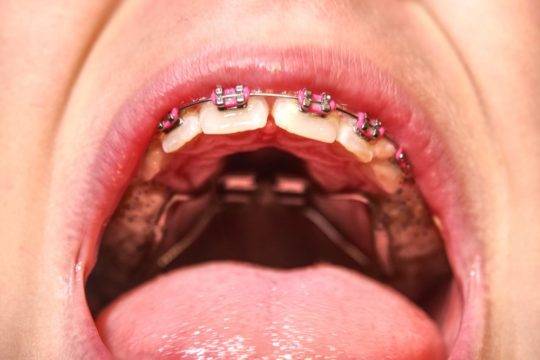Though most of us are not born with well-aligned teeth or a perfect celebrity-like smile, it does not mean we cannot get one! Orthodontics is the branch of dentistry that helps dentists correct teeth alignment and gift people a beautiful smile they are worthy of.
Common misalignment issues (called malocclusions) include crowding, spacing or gaps, rotated teeth, overbite, overjet, deep bite, and open bites. The most common cause of these malocclusions is the lack of space in the jaw due to a mismatch of jaw and tooth size.
To effectively align teeth, your orthodontist may require you to get one or more teeth extracted to create space in the jaw.
The premolars, two in number on each side of each jaw, are the most commonly extracted teeth for orthodontic treatment. Non-extraction options are eliminated before deciding on tooth extraction.
If you are wondering about the safety of teeth extractions, you are indeed not alone! Let’s understand more about pre-orthodontic tooth extraction.
Why is Extraction Required Before Braces Treatment?

Depending on the case, one to four teeth may need to be extracted to create sufficient space for moving teeth into their new positions. When there is an asymmetry in the smile, an odd number of teeth may be removed. If braces are used to treat the alignment of teeth in just one jaw, teeth are extracted from just that arch.
When Do You Need Extraction Before Braces?
Not all patients undergoing orthodontic treatment require teeth extraction. Some clinical cases when extractions are necessary to include:
- Severe cases of crowding (due to small jaw size or large teeth or a combination of both)
- Excessively protruded teeth in the upper and lower arch that give the face a convex profile
- Disharmony in the skeletal structure when one jaw is ahead of the other
- For a better finishing of teeth alignment
- To remove excess teeth that disrupt alignment in the arch
- When one or more teeth impede or affect jaw growth
- To remove wisdom teeth that mess up teeth alignment or interfere with your braces treatment
Which Teeth Are Extracted During Pre-Orthodontic Treatment?
After a thorough clinical and radiological assessment of your facial skeleton, jaws, and teeth, your orthodontist will determine which teeth need to be extracted.
The most commonly extracted teeth are your premolars (the fourth and fifth teeth from the midline of each jaw). While some cases require all the first premolars (fourth teeth from the midline) to be removed, others may require the second premolars (fifth tooth from the midline).
Your doctor will determine if the teeth must be removed from both sides of the same arch or both arches. So, the pre-orthodontic treatment plan varies for each patient and clinical case.
Are There Alternatives To Tooth Extraction Before Braces?
Though tooth extractions are safe and widely performed before orthodontic treatment for their offer long-lasting effects, they are not the only way to create space for tooth movement.
Are there alternatives for tooth extractions? Yes! The alternatives offered to you depend upon each case and include:
Expanding the palate

This step is commonly recommended in children who are still growing and involves expanding or widening the palate. The orthodontist uses special appliances on the upper arch to widen the palate and create space for teeth rather than extracting teeth.
The appliances used for this purpose, called palatal expanders, may be removable or fixed and are often combined with or precede braces treatment. Once sufficient space has been created with these appliances, the orthodontist begins moving teeth to align them.
Surgical widening of the palate
In some cases, palatal widening is not possible using fixed or removable devices. Orthodontists use a surgical method of widening the palate by adding bone.
Distalisation of the molar
Molars are the last three teeth in each jaw. In some cases, where there is adequate space behind the last teeth in the jaw, special appliances are used to push them slightly backward to make space for crowded teeth. This may be sufficient to prevent tooth extraction in some patients.
Proximal stripping

Are Tooth Extractions Safe?
Think tooth extractions, and one of the first doubts that arise is, ”Are tooth extractions safe?”. If your orthodontist feels extractions are needed before your braces treatment, you will be referred to a general dentist or surgeon for the procedure. Tooth extraction is safe and performed as an outpatient procedure in your dentist’s office.
After the treatment is completed, you will be given post-extraction instructions. Your braces treatment will begin two to three weeks after the extraction procedure to allow sufficient healing time for the sockets.
Key Takeaway!
Tooth extractions are an extremely common pre-orthodontic treatment and are widely used worldwide. Though they are safe and one of the most effective ways to treat severe malocclusions, you can ask your doctor for alternatives.
Are you worried about tooth extractions before braces treatment? We’ve got your back! Visit our dental experts at your nearest Sabka Dentist clinics and get a comprehensive consultation.





